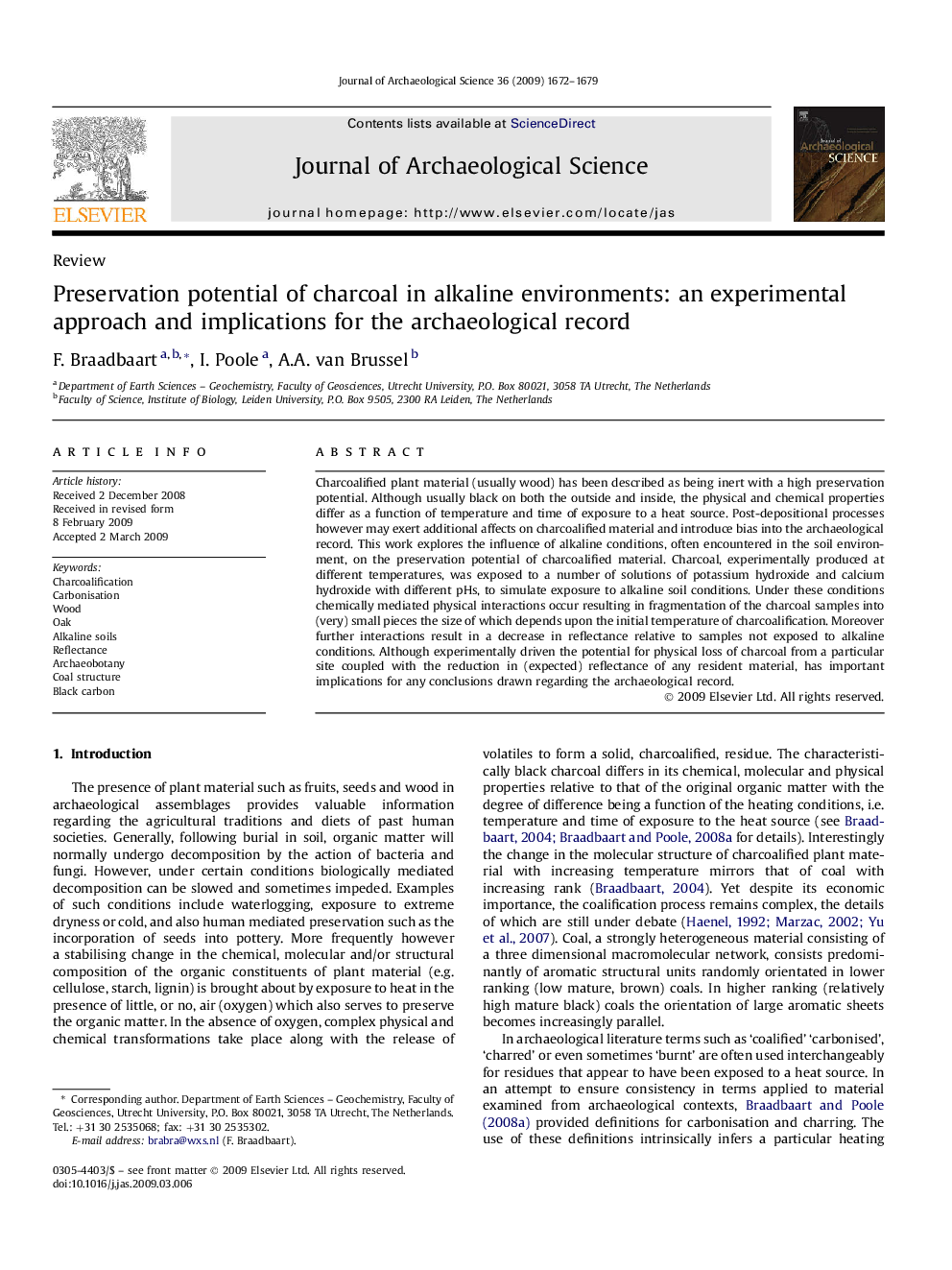| Article ID | Journal | Published Year | Pages | File Type |
|---|---|---|---|---|
| 1036983 | Journal of Archaeological Science | 2009 | 8 Pages |
Charcoalified plant material (usually wood) has been described as being inert with a high preservation potential. Although usually black on both the outside and inside, the physical and chemical properties differ as a function of temperature and time of exposure to a heat source. Post-depositional processes however may exert additional affects on charcoalified material and introduce bias into the archaeological record. This work explores the influence of alkaline conditions, often encountered in the soil environment, on the preservation potential of charcoalified material. Charcoal, experimentally produced at different temperatures, was exposed to a number of solutions of potassium hydroxide and calcium hydroxide with different pHs, to simulate exposure to alkaline soil conditions. Under these conditions chemically mediated physical interactions occur resulting in fragmentation of the charcoal samples into (very) small pieces the size of which depends upon the initial temperature of charcoalification. Moreover further interactions result in a decrease in reflectance relative to samples not exposed to alkaline conditions. Although experimentally driven the potential for physical loss of charcoal from a particular site coupled with the reduction in (expected) reflectance of any resident material, has important implications for any conclusions drawn regarding the archaeological record.
